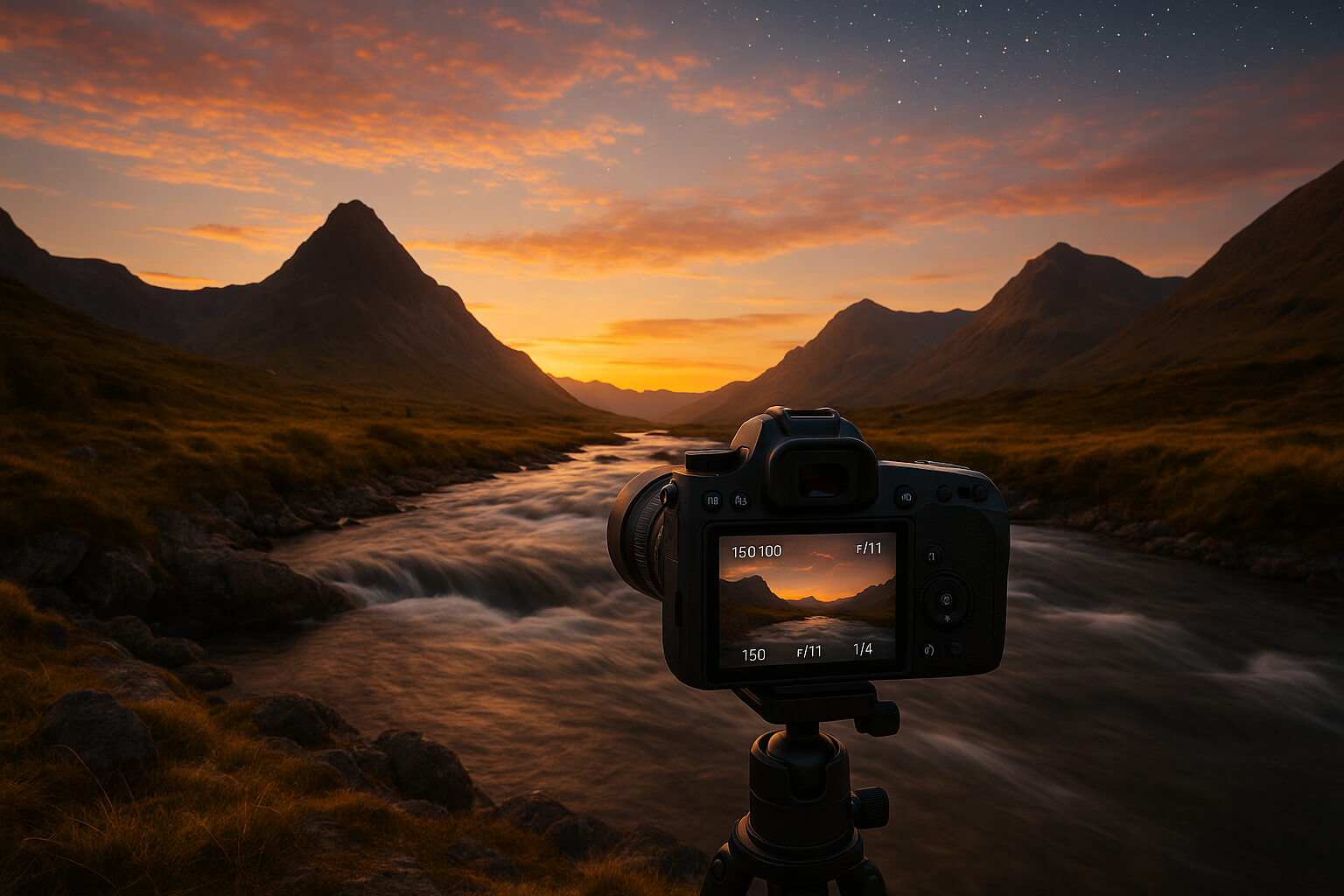June 14, 2025

In landscape photography, aperture isn’t just a technical setting — it’s a creative decision that affects every part of your image. From sharp mountain peaks to dreamy forest paths, how you control aperture shapes the depth, clarity, and mood of your photo. This guide walks you through everything you need to know, from basic principles to advanced techniques.
Aperture refers to the circular opening in your lens that controls how much light enters your camera’s sensor. This opening can be wide or narrow, and it's measured using something called “f-stops.” You’ve probably seen them written like f/2.8, f/5.6, f/8, or f/16.
The lower the f-stop number, the wider the aperture. That means:
On the other hand, a higher f-stop number means the aperture is smaller:
Related: What is White Balance in Photography?
When you’re photographing landscapes, you’re not just capturing a subject — you’re capturing an entire scene, often stretching from a few inches in front of your feet to mountains miles away. The right aperture ensures everything stays in crisp focus, helping your viewer feel immersed in the scene.
There are three main reasons why aperture is so important in this genre:
While every scene is unique, the majority of professional landscape photos are taken using apertures between f/8 and f/11. This range strikes a perfect balance between sharpness, depth of field, and light control.
Using f/8 or f/11 ensures that your foreground, middle ground, and background all stay acceptably sharp. It also minimizes the risk of diffraction (a problem we’ll cover later). Whether you're capturing a vast desert or a waterfall in a jungle, this range gives you clarity and flexibility.
Related: Best Camera Settings for Astrophotography
In some situations, you might want to go beyond that range:
Although landscape photography usually calls for deep focus, there are times when breaking the rule leads to a more powerful image. Aperture can be a storytelling tool, not just a technical necessity.
Here are three creative ways you can use aperture in landscapes:
Related: How to Create Beautiful Sun Flare Effects
Diffraction is a natural limitation that occurs when light passes through a very small opening, like f/22. Instead of moving straight onto the sensor, light waves spread out and interfere with each other, causing the image to look slightly soft.
This is why shooting at extremely narrow apertures (like f/22 or f/32) can reduce sharpness — even though you’re increasing depth of field.
So, while you can use f/22 for maximum focus, it’s often better to stay around f/11 or use focus stacking instead. Focus stacking involves taking multiple photos at different focus points and blending them in software to get full sharpness without relying on small apertures.
Related: Common Mistakes in Photography and How to Avoid Them
Aperture doesn’t exist in a vacuum. When you adjust it, you need to consider shutter speed, ISO, and filters to maintain proper exposure and image quality.
If you want to push your skills beyond aperture and explore other essential techniques, check out these in-depth guides:
Choosing the right aperture is one of the most important decisions you'll make when shooting landscapes. It affects how sharp your image is, how much of the scene is in focus, and how the final photo feels to the viewer.
For most situations, sticking to f/8 or f/11 will give you reliable results — balancing sharpness, clarity, and depth. But don’t be afraid to experiment with wider or narrower apertures when the scene calls for it. Landscape photography is as much about artistic intention as it is about technical precision.
With a solid understanding of aperture, you're no longer guessing — you’re composing with control, clarity, and creativity.
Stay up to date with the newest tips, gear reviews, and step-by-step guides to elevate your photography journey from home and beyond.